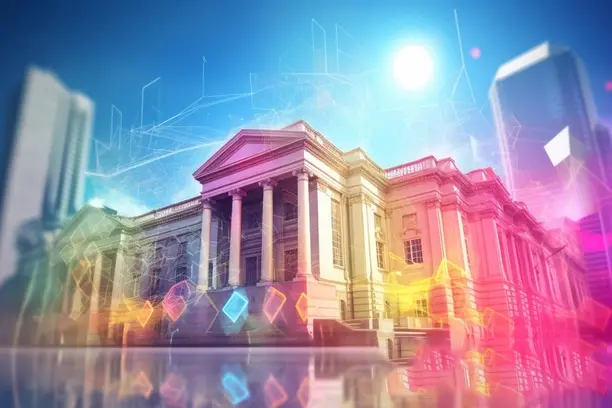Solana is a high-performance platform based on blockchain technology designed to solve the problem of congestion and inefficiency, and has attracted a large number of developers and projects. Its ecosystem is fast, scalable and low-cost, providing efficient smart contract execution, decentralized application (DApp) development and other services. In this paper, we will delve into the core features, advantages and future development trends of Solana's ecosystem, and introduce how it stands out as a key infrastructure in the blockchain space.

What is Solana Ecology?
Solana is a high-performance blockchain platform launched by Anatoly Yakovenko in 2020. Its main goal is to solve the scalability and speed bottleneck of traditional blockchain platforms such as Bitcoin and Ether, thus enabling faster, cheaper and decentralized blockchain transactions.Solana's blockchain technology is based on a unique consensus algorithm, Proof of History (PoH), which Solana's blockchain technology is based on a unique consensus algorithm, Proof of History (PoH), which allows each block to be generated in a time-consistent manner, thus accelerating transaction processing to thousands of transactions per second (TPS).
Solana's ecosystem covers a wide range of areas, including decentralized finance (DeFi), non-homogenized tokens (NFT), Web3 applications, and more. Developers can use Solana to build smart contracts, decentralized applications (DApps), etc., and achieve a better user experience with Solana's high-speed processing power and low transaction costs.Solana's ecosystem is not limited to the cryptocurrency community, but is actively open to enterprises and developers, becoming a widely used blockchain infrastructure for finance, gaming, and other fields.
Core Features of Solana Ecology
High performance and low latency
One of Solana's best features is its superior performance. the Solana blockchain can process more than 65,000 transactions per second (based on 2023 data), far exceeding Ether's 15 TPS and Bitcoin's 7 TPS. this is largely due to Solana's use of the Proof of History (PoH) consensus algorithm, which allows Solana to Solana's ability to process large-scale transactions without compromising decentralization and security.
Solana's transaction confirmation time is very short, typically taking only about 400 milliseconds. This speed allows it to support real-time transactions and large-scale DApp runs, making it ideal for application scenarios that require high-speed processing, such as financial markets, games, and more.
low transaction cost
Solana's transaction fees are extremely low compared to mainstream blockchains such as Ether. The cost per transaction is typically only $0.00025, which gives Solana a significant competitive advantage when dealing with large volumes of small transactions. For many decentralized finance (DeFi) applications and NFT projects, this low cost can dramatically increase user engagement and transaction frequency.
Decentralization and Security
Despite its emphasis on performance and scalability, Solana maintains a decentralized design, with nodes distributed globally so that anyone can participate in the maintenance and security of the network. The platform's security relies on its unique Proof of History mechanism, which not only protects the tamperability of transactions, but also greatly improves the network's resistance to attacks.

Solana Ecosystem Development and Application Scenarios
DeFi and Financial Applications
Solana's high performance has made it a popular platform in the decentralized finance (DeFi) space. Many DeFi projects have chosen to build on Solana to take advantage of its low transaction costs and fast processing power to provide easier access to financial services. Decentralized exchanges (DEX) like Serum and Raydium are built on the Solana ecosystem and have successfully attracted significant liquidity and user participation.
NFT and Creative Industries
In addition to DeFi, Solana has also made significant achievements in the NFT space, supporting fast NFT trading and offering low transaction fees to make NFT trading easier and more convenient. Popular NFT markets such as Magic Eden have attracted a large number of creators and collectors, and Solana's NFT ecosystem continues to expand as a new channel for artistic and cultural exchange.
Web3 Applications and Enterprise Collaboration
Solana's high-performance features have also allowed it to be used in a wide range of Web3 applications, with many innovative Web3 projects choosing to build their infrastructure on Solana, with token issuance and decentralized governance. Many innovative Web3 projects have chosen to build their infrastructure on Solana, with token issuance and decentralized governance, and Solana has partnered with a number of large corporations to further commercialize the use of blockchain technology.Solana is not only a development platform for decentralized applications, but is also expanding into the enterprise application space to help companies achieve digital transformation.
Challenges and Future Development of Solana Ecology
Network Congestion and Decentralization
Despite its performance and cost advantages, Solana faces a number of challenges; the Solana network has experienced a number of congestion and downtime events in the past, which have mostly been repaired, but have still sparked debate about its decentralization and stability. In the future, Solana will need to further improve the reliability of its network and strengthen the community's confidence in its security.
Competitive Pressure
While Solana is growing rapidly, it is also facing fierce competition from other blockchain platforms. For example, Ether's Layer 2 solution, Polkadot, Avalanche, and other platforms are actively competing for market share. These competitors are also trying to solve the problems of scalability and high transaction costs of blockchain, so Solana will face a lot of pressure in the future development.
Continuous technological innovation
Solana's technology innovation remains a key driver of its future growth, as the Solana Foundation and developer community continue to explore ways to further enhance the network's processing power, reduce latency, and lower costs, and Solana's future directions are likely to focus on areas such as smart contract optimization, growth of decentralized applications, and support for cross-chain protocols.
Conclusion: Solana's Ecology and Future
The Solana ecosystem is unique in that it provides a high-performance, low-cost and decentralized blockchain platform, and has demonstrated strong viability in areas such as DeFi, NFT and Web3. Despite the challenges and competitive pressures it faces, Solana's technological innovation and expanding application landscape continue to make it a major force in the blockchain space. With more developers and enterprises joining in, Solana's future is full of infinite possibilities, which is worth watching and looking forward to.














